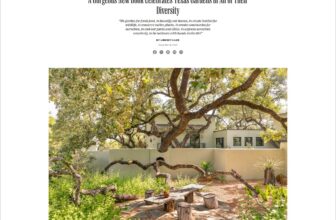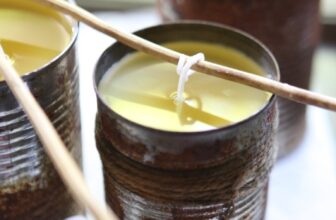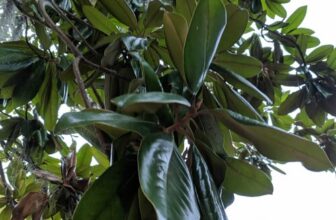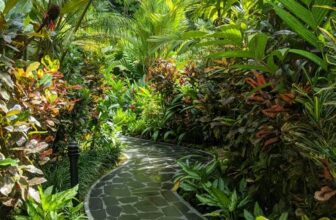 HOW DO THREE MORE 90-minute distractions from the seemingly endless world noise sound right about now, with each session offering an updated look at an aspect of gardening I find most challenging: design?
HOW DO THREE MORE 90-minute distractions from the seemingly endless world noise sound right about now, with each session offering an updated look at an aspect of gardening I find most challenging: design?
I’m especially seeking ideas for putting my increasingly native-focused plant choices together in ways that add up to landscape elements that are both beautiful and ecologically hard-working—and can work anywhere from a city street (above) to a rural setting.
I’ve been grateful for your continuing enthusiasm for my “Garden 2.0” webinar series—I know I enjoyed our summer meet-ups, too, and learned a lot from the expert guests. So what do you say we just keep on learning together through the fall, with a monthly gathering for an expert talk and Q&A?
I think that fall—before the temptation of winter’s catalog season or the urgency of spring—is the ideal time to think ahead about potential garden enhancements and plantings to come. As the season winds down, I’m making notes on what worked and didn’t, and seeking aesthetic inspiration and practical, tactical solutions. Maybe you are, too?
With that in mind, I’ve invited three talented presenters whose work I greatly admire to coach us and answer our questions. Each one will take a fresh, ecologically focused look at an aspect of design and planting, including:
- designing gardens that go beyond a visual treat, and provide a sense of experience;
- transitioning the front lawn to more diversity, step-by-step;
- supporting native bees with strategically designed “soft landing” plantings.
How it all works: For nearly four years, my Virtual Garden Club operated only on a subscription model, where members purchased access to a whole semester of classes at a time. This spring I introduced a new format, which because of your positive response continued this summer and will resume this autumn.
I’ll once again host monthly 90-minute workshops you can buy individually (or sign up for all three at a 14 percent discount!). Attend your choice(s) live, or watch the recorded version for three months afterward, at your leisure.
Tickets for these standalone webinars are just $29, or $75 for the series, in hopes that they will be a continuing bright spot.
The lineup to choose from:
 Sept. 25, 2025, 1-2:30 PM Eastern
Sept. 25, 2025, 1-2:30 PM Eastern
‘Designing for the Experience: Composition in Practice,’ with Preston Montague
THE “what, where and how many?” of planting design can stymie even expert gardeners, landscape architect Preston Montague knows. He trained as an artist, and says the most successful gardens are more than just a visual treat—they are an experience.
What You’ll Learn in This Class:
“Designing for the Experience: Composition in Practice,” which draws on Preston’s classical art training, aims to help gardeners make landscape-design decisions around the question of what goes where.
By simplifying principles of composition—like rhythm, proportion, and emphasis—and looking to other art forms like music for inspiration, too, Preston offers simple considerations for what he calls “choreographing an experience.”
Learn how the old adage “right plant, right place” goes beyond plant survivability, to apply to how we arrange plants to encourage particular reactions from visitors. He’ll also offer simple tactics that can hasten decision-making and help organize the design process.
The idea of shaping a landscape to craft an experience was a major “aha” moment for Preston, and it resonated deeply for him as a painter. Many painters strategically smear paint across a canvas to evoke a desired response; in a similar way, reverse-engineering a landscape experience—breaking it down into “red flowering plants here, wall there, tree over there”—is a fascinating way to critique a space and uncover its design intent.
“Understanding that experience is the product, and that tools like rhythm and emphasis can serve as a kind of design code, can be liberating,” he says, “especially for those with more left-brained inclinations.”
Come with your questions to ask live in class or submit in advance (with a photo attached for design and plant ID help, for instance).
You’ll leave Preston’s talk and the Q&A opportunity that follows feeling inspired, and full of ideas for your own space, no matter how small.
Order a ticket for this webinar or all three here.
About Preston: Preston Montague is a landscape architect and artist based in Durham, N.C., working to strengthen relationships between people and the natural world. His environmental design studio deploys art, horticulture, and landscape architecture in the service of building places that have meaning and ecological depth. When not in studio, Preston enjoys teaching landscape architecture at North Carolina A&T State University and hiking the wilder places.
 Oct. 23, 2025, 1-2:30 PM Eastern
Oct. 23, 2025, 1-2:30 PM Eastern
‘Lawn to Meadow: A Light and Gradual Transition,’ with Sara Weaner Cooper
AARE you considering transitioning some or all of your lawn to something more biodiverse—like a wildflower meadow—but the process seems daunting? Sara Weaner Cooper undertook such a project three growing seasons ago, and will share her first-hand experience, including ingenious tactical insights (like how you don’t have to smother or remove all the former lawn first).
What You’ll Learn in This Class:
In April 2022, Sara and Evan Cooper moved into their new home in a suburban Philadelphia neighborhood. After one spring and summer of consistently mowing their nearly 5,000-square-foot front lawn, Sara eagerly initiated the process of transitioning the lawn into a native wildflower meadow.
She wanted to avoid four things, however: chemical use, heavy labor, smothering, and an early-stage ugly phase. Leaving the turf in place and collaborating with her father, the longtime landscape designer Larry Weaner, she began a turf-to-meadow conversion process that relied on light-touch actions that simultaneously weakened the lawn and strengthened her newly planted meadow.
After three growing seasons, the results exceeded expectations…enough to be featured in “The New York Times” in 2024 and by the BBC in 2025. Learn the practical steps they took, the successes and challenges they have so far encountered—including how they have positively communicated about this very different-looking front yard with their neighbors—and their plans for guiding the meadow to maturity.
Come with your questions to ask live in class or submit in advance (with a photo attached for design and plant ID help, for instance).
Order a ticket for this webinar or all three here.
About Sara: Sara Weaner Cooper, New Directions in the American Landscape’s executive director, began her role with NDAL in 2018 as educational program coordinator. Sara and her husband Evan Cooper’s home landscape, an experimental yet highly successful organic transition from lawn to native meadow, was featured by the BBC in 2025 and in “The New York Times” in 2024. She holds a M.A. in anthropology and education from Teachers College, Columbia University, and a B.A. in anthropology and education from Bryn Mawr College. In 2024 NDAL received the American Horticultural Society (AHS) Award for Horticultural Innovation, which recognizes an individual/organization “whose innovations have made the field of horticulture more sustainable and accessible to all.”
Nov. 13, 2025, 1-2:30 PM Eastern
 ‘Keystone Plants and ‘Soft Landings’ Plantings for Native Bees,’ with Heather Holm
‘Keystone Plants and ‘Soft Landings’ Plantings for Native Bees,’ with Heather Holm
WHILE the monarch butterfly is perhaps the most well-known insect specialist (its caterpillars exclusively feed on milkweed), many native bee species also have highly specialized diets. Pollinator expert and award-winning author Heather Holm will teach us how to support more of these critically important insects and other key beneficials in our landscapes with strategic plant choices and ingenious placement of those plants in what she calls “soft landings.”
What You’ll Learn in This Class:
Female native bee specialists, or oligoleges, collect pollen from a limited range of native plants—sometimes just one plant genus or species, or several genera within one plant family. Some of these pollen host plants are considered “keystone plants” because they provide necessary food resources for a significant number of native bee species. In this presentation, you’ll learn about these keystone plants, the conditions they thrive in within natural habitats, and how to incorporate many of them into your pollinator-friendly plantings.
Heather will also introduce the concept of a “soft landings” planting—a diverse, native planting strategically placed under native keystone trees. These plantings offer vital food and shelter for native bees, as well as for other beneficial insects such as caterpillars, beetles, lacewings and more. By incorporating these plants and habitats into your garden, you can help create a thriving, sustainable ecosystem for pollinators and other wildlife.
Order a ticket for this webinar or all three here.
About Heather: Heather Holm is a pollinator conservationist and award-winning author of four books: “Pollinators of Native Plants” (2014), “Bees” (2017), “Wasps” (2021), and “Common Native Bees of the Eastern United States” (2022). Both “Bees” and “Wasps” have won multiple book awards, including the American Horticultural Society Book Award (2018 and 2022 respectively). She is the founder and chair of Minnesota Native Bees, an online field guide illustrating the native bees of Minnesota and beyond. Heather’s expertise includes the interactions between native pollinators and native plants, and the natural history and biology of native bees and predatory wasps. Her work has been featured in “The New York Times,” “Minneapolis Star Tribune,” and elsewhere.




